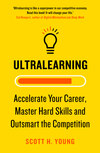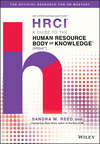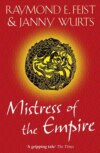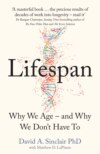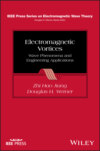Kitabı oku: «Ultralearning», sayfa 4
CHAPTER 3
How to Become an Ultralearner
“I’d love to be a guinea pig.” It was an email from Tristan de Montebello. I had first met the charming, half-French, half-American musician and entrepreneur seven years earlier, at almost exactly the same time as my fateful encounter with Benny Lewis. With tousled blond hair and a close-cropped beard, he looked like he belonged on a surfboard on some stretch of California coastline. De Montebello was the kind of guy you liked immediately: confident, yet down to earth, with only the vaguest hints of a French accent in his otherwise perfect English. Over the years, we had kept in touch: me with my strange learning experiments; him hopping around the world, going from working with a Parisian startup that made bespoke cashmere sweaters to guitarist, vagabond, and eventually web consultant in Los Angeles, much closer to the beaches that suited him so well. Now he had heard I was writing a book about learning, and he was interested.
The context of his email was that although I had met and documented dozens of people accomplishing strange and intriguing learning feats, the meetings had been largely after the fact. They were people I had met or heard about after their successes, not before; observations of successes, not experiments that generated them. As a result, it was hard to tell exactly how accessible this ultralearning thing was. If you filter through enough pebbles, you’re sure to find a few flecks of gold. Was I doing the same thing, scouring for unusual learning projects? Sift through enough people, and you’re bound to find some that seem incredible. But if ultralearning had the potential that I imagined it did, it would be nice to find someone before he or she tried a project and watch the results. To test this, I put together a small group of about a dozen people (mostly readers of my blog) who were interested in giving this ultralearning thing a shot. Among them was de Montebello.
BECOMING AN ULTRALEARNER
“Maybe piano?” de Montebello suggested. Although he was interested in the concept of ultralearning, he had no idea which skill he’d like to learn. He had played guitar and been the lead singer for a band. With his musical background, learning to play piano seemed like a relatively safe choice. He had even made a course teaching guitar lessons online, so learning another musical instrument could potentially expand his business. Selfishly, I encouraged him to try learning something farther outside his comfort zone. A musician picking up another instrument didn’t seem like the ideal case to study for seeing whether ultralearning could be applied broadly. We threw more ideas around. A week or two later, he decided on public speaking. His background as a musician had given him experience being onstage, but otherwise he had little experience giving speeches. Public speaking is a useful skill, too, he argued, so it would be worth getting better at even if nothing noteworthy came from the effort.
De Montebello had a private motivation for wanting to become good at public speaking. He had given only a handful of speeches in his life, and most of those had been in college. He related to me one example, from when he had gone to give a talk to a dozen people at a web design firm in Paris: “I cringe every time I think back to that.” He explained, “I could just tell I wasn’t connecting. There were many pieces where I was boring them. There were jokes where I would laugh, because I thought it was funny, but nobody else would.” Being a musician, he was surprised “how little of it translated” to public speaking. Still, it was something in which he saw potential value, if he could get good at it. “Public speaking is a metaskill,” he feels. It’s the kind of skill that assists with other skills: “confidence, storytelling, writing, creativity, interviewing skills, selling skills. It touches on so many different things.” With that in mind, he set to work.
FIRST STEPS OF A FLEDGLING ULTRALEARNER
De Montebello had picked his topic, but he wasn’t sure exactly how he should learn it. He decided to attend a meeting of Toastmasters International, the organization for learning public speaking. At that point, his story had two doses of luck. The first was that in attendance at the very first meeting for his public speaking project was Michael Gendler. Gendler was a longtime Toastmaster, and de Montebello’s combination of charm and obsessive intensity to become good at public speaking convinced him to help coach de Montebello through his project. The second dose of luck was something that de Montebello didn’t fully appreciate at the time: he had showed up just ten days before the deadline to be eligible to compete in the World Championship of Public Speaking.
The World Championship of Public Speaking is a competition put on annually by Toastmasters in which members compete, elimination style, starting in individual clubs and going on to larger and larger units of the organization, until a select few make it to the final stage. De Montebello had little more than a week to prepare. Still, the competition provided a potential structure for his ultralearning project, so he went for it, cranking out the six mandatory qualifying speeches in the coming week, finishing the last in the nick of time.
De Montebello practiced obsessively, sometimes speaking twice in one day. He recorded a video of every speech and analyzed it obsessively for flaws. He asked for feedback every time he gave a speech, and he got plenty of it. His coach, Gendler, pushed him far outside of his comfort zone. Once, when faced with the choice between polishing an existing speech and creating a brand-new one from scratch, de Montebello asked what he should do. Gendler’s response was to do whichever was scariest for him.
His relentless drive pushed de Montebello into unusual places. He took improv classes to work on his spontaneous delivery. There he learned to trust whatever was in his head and deliver it without hesitation. That kept him from stammering over his words or fearing freezing up onstage. He talked to a friend who works as a Hollywood director to give feedback on his delivery. The director taught de Montebello to give his speech dozens of times in different styles—angry, monotone, screaming, even as a rap—then go back and see what was different from his normal voice. According to de Montebello, that helped break him of the “uncanny valley” that happened when his normal speaking delivery felt slightly unnatural.
Another friend with a background in theater gave him tips on stage presence. He took de Montebello through his speech and showed how each word and sentence indicated movement that could be translated to where he moved on the stage. Instead of standing constricted under the spotlight, de Montebello could now move gracefully and use his body to communicate his message on top of his words. He even gave his speech at a middle school, knowing that seventh graders would give the most ruthless feedback of all. After bombing terribly outside the comfort of Toastmasters, he learned to talk to his audience before going onstage: learn their language and emotions and connect with them. That way, applying all he had learned so far, he could change his speech on the fly, so it would be sure to connect with a new audience. Above all, Gendler pushed him relentlessly. “Make me care,” Gendler told him after listening to one of de Montebello’s speeches. “I understand why this is important to you, but the audience doesn’t care about you. You have to make me care.” Diverse advice and voluminous practice would soak those lessons in deeply, allowing de Montebello to quickly surpass his early awkwardness on the stage.
After a month, de Montebello won his area competition, beating out a competitor with two decades of experience in Toastmasters. He won his district and division competitions, too. Finally, less than seven months after he first tried his hand at public speaking, he was going to compete in the World Championships. “There are about thirty thousand people who compete every year,” he noted, adding “I’m pretty confident I’m the fastest competitor in history to make it this far, since if I had started ten days later, I couldn’t have competed.” He made it into the top ten.
FROM SEMIFINALIST TO CAREER CHANGE
“I knew this project was going to be big for me when I started it,” de Montebello told me months after his top ten placement in the international competition. “But it was literally life changing. I didn’t expect it to actually change my life.” Reaching the final competition in the World Championship had been quite a journey, but it was only afterward that he began to realize how much he had learned. “I was learning for this very narrow world of public speaking. It was only after that I realized the depth of all these skills I had worked so much on: storytelling, confidence, communicating.”
Friends who heard of de Montebello’s success started asking if he could help them work on their own speeches. He and Gendler saw an opportunity to help others improve their public speaking skills. The demand was intense. Authors who command five-figure speaking fees started to approach the duo to see if they could be taught to improve their public speaking the ultralearning way. Soon they had landed their first client, to the tune of twenty thousand dollars. Gendler and de Montebello weren’t mercenary; they wanted to focus only on speakers whose message they really believed in. But the fact that they had attracted such high-status clients certainly helped persuade them to make the switch into coaching public speaking full-time. Gendler and de Montebello even decided to name their consultancy UltraSpeaking, as a nod to the strategy that made it all possible.
De Montebello’s story ended up being much more dramatic than either of us had initially expected. His initial hope had been that he could practice intensely for a few months, deliver a great speech somewhere, and have it recorded—a nice memento and a new skill—but not that he would reach the status of an international competitor and eventually experience a complete career change. Of the other dozen or so people I spent some time coaching into ultralearning, none offered so dramatic an example. Some dropped out. Life got in the way (or perhaps revealed that they weren’t actually as committed as they had initially appeared to be). Others had respectable successes, making significant improvements in learning medicine, statistics, comic book drawing, military history, and yoga, even if they didn’t reach de Montebello’s degree of success.
What differentiated de Montebello wasn’t that he thought he could go from near-zero experience to the finalist for the World Championship in six months. Rather, it was his obsessive work ethic. His goal wasn’t to reach some predetermined extreme but to see how far he could go. Sometimes you’ll get lucky and embark on a path that will take you quite far. But even the failure mode of ultralearning is usually that you will learn a skill fairly well. Even those who didn’t have such dramatic results among the small group I spent time coaching, those who stuck with their project still ended up learning a new skill they cared about. You may not compete in world championships or completely switch careers, but as long as you stick with the process, you’re bound to learn something new. What de Montebello’s example encapsulated for me was not only that you can become an ultralearner but that such successes are far from being the inevitable consequences of having a particular kind of genius or talent. Had de Montebello focused on piano instead, his experience with giving speeches would probably have remained that one awkward example from his days in Paris.
PRINCIPLES OF BECOMING AN ULTRALEARNER
De Montebello’s story illustrates that it’s possible to decide to become an ultralearner. But ultralearning isn’t a cookie-cutter method. Every project is unique, and so are the methods needed to master it. The uniqueness of ultralearning projects is one of the elements that ties them all together. If ultralearning could be bottled or standardized, it would simply be an intense form of structured education. What makes ultralearning interesting is also what makes it hard to boil down into step-by-step formulas.
This is a difficult challenge, but I’m going to try to sidestep it by focusing on principles first. Principles allow you to solve problems, even those you may have never encountered before, in a way that a recipe or mechanical procedure cannot. If you really understand the principles of physics, for instance, you can solve a new problem simply by working backward. Principles make sense of the world, and even if they don’t always articulate exactly how you should solve a particular challenge, they can provide immense guidance. Ultralearning, in my view, works best when you see it through a simple set of principles, rather than trying to copy and paste exact steps or protocols.
The principles of ultralearning are going to be the focus of the second part of this book. In each chapter, I’ll introduce a new principle, plus some evidence to back it up both from ultralearning examples and from scientific research. Finally, I’ll share possible ways that the principle can manifest itself as specific tactics. These tactics are only a small sample. But they should provide a starting point for you to think creatively about your own ultralearning challenges.
There are nine universal principles that underlie the ultralearning projects described so far. Each embodies a particular aspect of successful learning, and I describe how ultralearners maximize the effectiveness of the principle through the choices they make in their projects. They are:
1 Metalearning: First Draw a Map. Start by learning how to learn the subject or skill you want to tackle. Discover how to do good research and how to draw on your past competencies to learn new skills more easily.
2 Focus: Sharpen Your Knife. Cultivate the ability to concentrate. Carve out chunks of time when you can focus on learning, and make it easy to just do it.
3 Directness: Go Straight Ahead. Learn by doing the thing you want to become good at. Don’t trade it off for other tasks, just because those are more convenient or comfortable.
4 Drill: Attack Your Weakest Point. Be ruthless in improving your weakest points. Break down complex skills into small parts; then master those parts and build them back together again.
5 Retrieval: Test to Learn. Testing isn’t simply a way of assessing knowledge but a way of creating it. Test yourself before you feel confident, and push yourself to actively recall information rather than passively review it.
6 Feedback: Don’t Dodge the Punches. Feedback is harsh and uncomfortable. Know how to use it without letting your ego get in the way. Extract the signal from the noise, so you know what to pay attention to and what to ignore.
7 Retention: Don’t Fill a Leaky Bucket. Understand what you forget and why. Learn to remember things not just for now but forever.
8 Intuition: Dig Deep Before Building Up. Develop your intuition through play and exploration of concepts and skills. Understand how understanding works, and don’t recourse to cheap tricks of memorization to avoid deeply knowing things.
9 Experimentation: Explore Outside Your Comfort Zone. All of these principles are only starting points. True mastery comes not just from following the path trodden by others but from exploring possibilities they haven’t yet imagined.
I organized these nine principles based on my observations of ultralearning projects as well as my own personal experience, referencing, where I could, the vast cognitive science literature. I started with the ultralearners themselves. If one person did something in a certain way, that might be an interesting example, but it might also be an idiosyncrasy of that person. If several people or, better yet, every ultralearner I encountered, did a certain thing in a certain way, it was much stronger evidence that I had stumbled upon a general principle. I then checked those principles against the scientific literature. Are there mechanisms and findings from cognitive science to support the tactics I saw? Better yet, have there been controlled experiments comparing one approach to learning with another? The scientific research supports many of the learning strategies employed by the ultralearners I witnessed. This suggests that ultralearners, with their ruthless focus on efficiency and effectiveness, may have landed on some universal principles in the art of learning.
Beyond principles and tactics is a broader ultralearning ethos. It’s one of taking responsibility for your own learning: deciding what you want to learn, how you want to learn it, and crafting your own plan to learn what you need to. You’re the one in charge, and you’re the one who’s ultimately responsible for the results you generate. If you approach ultralearning in that spirit, you should take these principles as flexible guidelines, not as rigid rules. Learning well isn’t just about following a set of prescriptions. You need to try things out for yourself, think hard about the nature of the learning challenges you face, and test solutions to overcome them. With that in mind, let’s turn to the first ultralearning principle: metalearning.
CHAPTER 4
PRINCIPLE 1
Metalearning
First Draw a Map
If I have seen further it is by standing on the shoulders of giants.
—Isaac Newton
Dan Everett stands in front of a packed auditorium. A stocky man in his early sixties, he speaks slowly and confidently, his smiling face framed by thinning blond hair and a beard. Next to him is a table filled with assorted objects: sticks, stones, leaves, containers, fruit, a pitcher of water. He signals that the demonstration is about to begin.
Entering from a door on the right, a heavyset middle-aged woman with dark brown hair and olive skin approaches the stage. Everett goes up to her and says something in a language she doesn’t understand. She looks around, clearly confused, and then replies hesitantly, “Kuti paoka djalou.” He tries to repeat what she has just said. There’s some stumbling at first, but after one or two more tries, she seems satisfied with his repetition of her reply. He goes to the blackboard and writes, “Kuti paoka djalou ➱ ‘Greeting (?).’” Next he picks up a small stick and points to it. She guesses correctly that he wants to know the name and replies, “ŋkindo.” Once again, Everett goes to the blackboard and writes, “ŋkindo ➱ stick.” Next he tries two sticks and gets the same response, “ŋkindo.” He then drops the stick, to which the woman says, “ŋkindo paula.” The demonstration proceeds, with Everett picking up objects, performing actions, listening to the woman’s responses, and recording the results on the blackboard. Soon he’s moved past simple naming tasks and starts asking for more complicated sentences: “She drinks the water,” “You eat the banana,” and “Put the rock in the container.” With each new elicitation, he experiments, building new sentences and testing her reaction to see if he is correct. Within half an hour, there are more than two blackboards full of nouns, verbs, pronouns, and phonetic annotations.
Learning dozens of words and phrases in a new language is a good start for the first thirty minutes spent with any language. What makes this feat particularly impressive is that Everett isn’t allowed to speak any language he might have in common with the speaker. He can only try to encourage her to say words and phrases and repeat them to try to figure out the language’s grammar, pronunciation, and vocabulary. He doesn’t even know what language is being spoken.*
How can Everett start speaking a new language from scratch, without teachers or translations or even knowing what language he’s learning, in half an hour, when most of us struggle to do the same after years of high school Spanish classes? What enables Everett to pick up vocabulary, decode grammar, and pronunciation so much faster than you or I, even with all those additional constraints? Is he a linguistic genius, or is there something else going on?
The answer is our first principle of ultralearning: metalearning.
WHAT IS METALEARNING?
The prefix meta comes from the Greek term μετά, meaning “beyond.” It typically signifies when something is “about” itself or deals with a higher layer of abstraction. In this case metalearning means learning about learning. Here’s an example: If you’re learning Chinese characters, you will learn that 火 means “fire.” That’s regular learning. You may also learn that Chinese characters are often organized by something called radicals, which indicate what kind of thing the character describes. The character 灶, for example which means “stove,” has a 火 on the left-hand side to indicate that it has some relationship to fire. Learning this property of Chinese characters is metalearning—not learning about the object of your inquiry itself, in this case words and phrases, but learning about how knowledge is structured and acquired within this subject; in other words, learning how to learn it.
In Everett’s case, we can see glimpses of the enormous wealth of metalearning that lies just beneath the surface. “Well, what are some of the things we noticed about this?” Everett asks the audience after his brief demonstration has concluded, “It seems to be SVO, a subject-verb-object language, that’s not terribly shocking.” He continues, “There doesn’t seem to be any plural marking on the nouns, unless it’s tones and I missed it.… There’s clearly pitch going on here; whether it’s tone remains to be analyzed.” From this jargon we can see that when Everett evokes a word or phrase from his interlocutor, he isn’t just parroting back the sounds; he’s drawing a map with theories and hypotheses about how the language works grounded on years of experience learning languages.
In addition to his enormous wealth of knowledge as a linguist, Everett has another trick that gives him an enormous advantage. The demonstration he has presented is not his own invention. Called a “monolingual fieldwork” demonstration, this method was first developed by Everett’s teacher Kenneth Pike as a means of learning indigenous languages. The method lays out a sequence of objects and actions that the practitioner can use to start piecing together the language. This method even received some Hollywood exposure after Louise Banks, a fictional linguist, used it to decode an alien language in the 2016 science fiction movie Arrival.
These two pieces in Everett’s linguistic arsenal—a richly detailed map of how languages work and a method that provides a path to fluency—have allowed Everett to accomplish a lot more than just learning some simple sentences. Over the last thirty years he has become one of only a handful of outsiders to become fluent in Pirahã, one of the most unusual and difficult languages on the planet, spoken only by a remote tribe in the Amazon jungle.
THE POWER OF YOUR METALEARNING MAP
Everett’s case beautifully illustrates the power of using metalearning to learn new things faster and more effectively. Being able to see how a subject works, what kinds of skills and information must be mastered, and what methods are available to do so more effectively is at the heart of success of all ultralearning projects. Metalearning thus forms the map, showing you how to get to your destination without getting lost.
To see why metalearning is so important, consider one study on the helpful effects of already knowing a second language when learning a third. The study took place in Texas, where monolingual English speakers and bilingual Spanish/English speakers were enrolled in a French class. Follow-up on subsequent tests showed that the bilingual speakers outperformed the monolingual students when learning a new language. On its own, this isn’t terribly surprising. French and Spanish are both Romance languages, so there are shared features of grammar and vocabulary that aren’t present in English that could conceivably provide an advantage. More interesting, however, is that even among the Spanish/English bilinguals, those who also took Spanish classes ended up doing better when they later needed to learn French. The reason seems to be that taking classes assists with helping form what the study authors call metalinguistic awareness in a way that simply knowing a language informally does not. The difference between the two types of bilingual speakers mostly came down to metalearning: one group had content knowledge of the language, but the group that took classes also had knowledge about how information in a language is structured.*
Nor is this idea about metalearning restricted to languages. Linguistic examples are often easier to study because there’s a cleaner separation of metalearning and regular learning. This is because the contents of unrelated languages, such as vocabulary and grammar, are often quite different, even if the metalearning structure is the same. Learning French vocabulary won’t help you much with learning Chinese vocabulary, but understanding how vocabulary acquisition works in French will likely also help with learning Chinese. By the time my friend and I had reached the last country in our year of learning languages, the process of immersing ourselves and learning a new language from scratch was practically a routine. The words and grammar of Korean may have been completely new, but the process of learning was already well trodden. Metalearning exists in all subjects, but it can often be harder to examine independently from regular learning.
HOW TO DRAW YOUR MAP
Now that you have some idea what metalearning is and its importance to learning faster, how can you apply this to get an edge in your own learning efforts? There are two main ways: over the short term and over the long term.
Over the short term, you can do research to focus on improving your metalearning before and during a learning project. Ultralearning, owing to its intensity and self-directed nature, has the opportunity for a lot higher variance than normal schooling efforts do. A good ultralearning project, with excellent materials and an awareness of what needs to be learned, has the potential to be completed faster than formal schooling. Language learning through intensive immersion can beat lengthy classes. Aggressively paced coding bootcamps can get participants up to a level where they can compete for jobs much faster than those with a normal undergraduate degree. This is because you can tailor your project to your exact needs and abilities, avoiding the one-size-fits-all approach taken in school. However, there’s also a danger of choosing unwisely and ending up much worse off. Metalearning research avoids this problem and helps you seek out points where you might even be able to get a significant advantage over the status quo.
Over the long term, the more ultralearning projects you do, the larger your set of general metalearning skills will be. You’ll know what your capacity is for learning, how you can best schedule your time and manage your motivation, and you’ll have well-tested strategies for dealing with common problems. As you learn more things, you’ll acquire more and more confidence, which will allow you to enjoy the process of learning more with less frustration.
In this chapter, I’m going to devote most of the next section to short-term research strategies, since they will probably benefit you the most. However, this emphasis shouldn’t undermine the importance of the long-term effects of metalearning. Ultralearning is a skill, just like riding a bicycle. The more practice you get with it, the more skills and knowledge you’ll pick up for how to do it well. This long-term advantage likely outweighs the short-term benefits and is what’s easiest to mistake for intelligence or talent when seen in others. My hope is that as you get more practice in ultralearning, you’ll start to automatically apply many of those skills to learn faster and more effectively.
DETERMINING WHY, WHAT, AND HOW
I find it useful to break down metalearning research that you do for a specific project into three questions: “Why?,” “What?,” and “How?” “Why?” refers to understanding your motivation to learn. If you know exactly why you want to learn a skill or subject, you can save a lot of time by focusing your project on exactly what matters most to you. “What?” refers to the knowledge and abilities you’ll need to acquire in order to be successful. Breaking things down into concepts, facts, and procedures can enable you to map out what obstacles you’ll face and how best to overcome them. “How?” refers to the resources, environment, and methods you’ll use when learning. Making careful choices here can make a big difference in your overall effectiveness.
With these three questions in mind, let’s take a look at each of them and how you can draw your map.
ANSWERING “WHY?”
The first question to try to answer is why are you learning and what that implies for how you should approach the project. Practically speaking, the projects you take on are going to have one of two broad motivations: instrumental and intrinsic.
Instrumental learning projects are those you’re learning with the purpose of achieving a different, nonlearning result. Consider the previously mentioned case of Diana Fehsenfeld, who, after a few decades as a librarian, found that her job was becoming obsolete. Computerized file systems and budget cuts meant she would need to learn new skills to stay relevant. She did some research and decided that the best way to do this would be to get a firmer grasp on statistics and data visualization. In this case, she wasn’t learning because of her deep love of statistics and data visualization but because she believed that doing so would benefit her career.
Ücretsiz ön izlemeyi tamamladınız.
